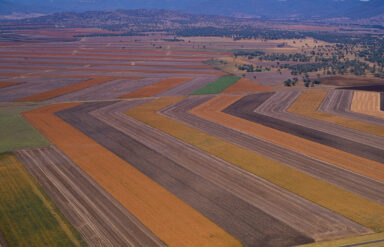The Merricks Capital Agriculture Credit Fund returned 0.6% in February and 9.1% on an annualised basis since inception.
One new loan was added to the portfolio during the month, a $6m drawdown to an existing borrower with dairy farms in the north-west of Tasmania. The blended forecast investor IRR across the total investment is now 8% (net fees and costs) secured against premium agricultural land at an average portfolio LVR below 56%. The outlook for cash deployment is positive with due diligence progressing on $55m of investment opportunities, $36m of which are expected to close in March with an estimated investor IRR of 9% (net fees and costs).
The food and agricultural sector was in the spotlight this month with ABARES announcing that the gross value of agricultural production is forecast to be a record $81bn in 2021/22, exceeding the previous year’s record by more than $12bn. The forecast has lifted due to record high crop production and the highest prices (in real terms) for Australian agricultural produce in 32 years. In 2022/23, the value of production is forecast to fall 6% to $76bn – still the second highest on record – with more normal seasonal conditions expected and international commodity prices to potentially recede.
From an investment management perspective, we have been tracking the recent flooding and supply chain challenges closely for any direct and indirect risks that could potentially impact borrower assets or Fund performance. While the Eastern seaboard flooding has not impacted any of the Fund’s borrowers’ assets, the widespread damage and disruption has amplified temporary supply chain challenges, such as delivering grain to port terminals. We expect these to largely resolve over the coming weeks.
Even as supply chains improve over the coming months, the military escalation between Russia and Ukraine has pushed many commodity prices higher. With buoyant commodity prices and favourable seasonal conditions, we expect the price inflation for agricultural inputs, such as fuel, fertilizer and labour to create capital deployment opportunities to potential borrowers, who look for agile lenders and alternatives to banks.
Australian and New Zealand farmland producing agricultural commodities have historically acted as a natural inflation hedge and we expect to see significant opportunities arising from the tightening of bank lending. As of today, we have a pipeline to invest +$250m over the next 3 months, with $170m of term sheets issued and $650m of identified opportunities across the Fund’s investment sectors.



